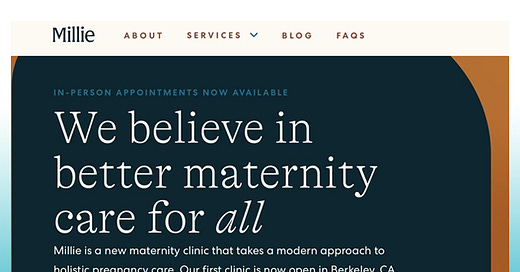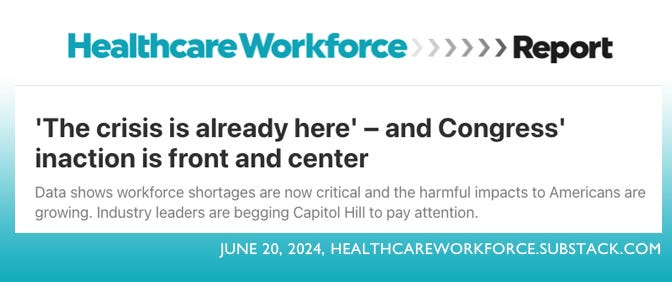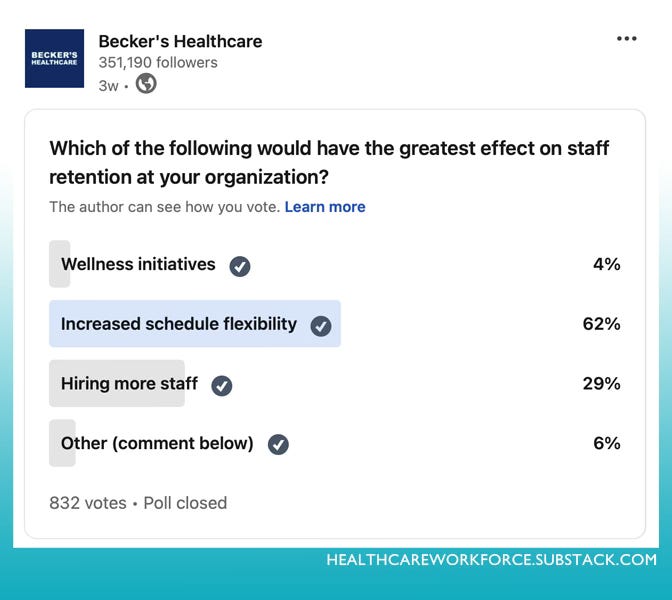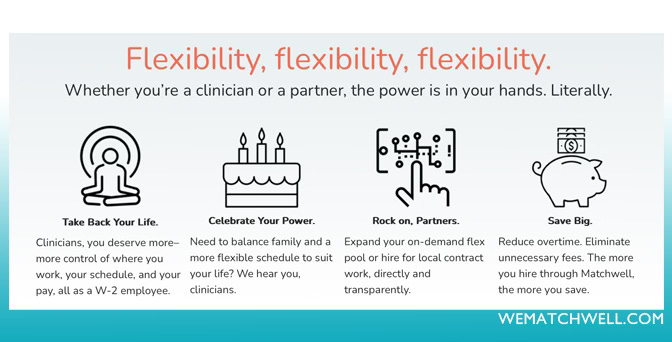AHA to members: Time to ramp up pressure on lawmakers and show up on Election Day
Plus: The top tactic for boosting retention; Indiana's new statewide staffing pool app; and a unique maternal care model that could boost access in underserved areas
The American Hospital Association is calling on its members and healthcare professionals to get busy calling and messaging their Senators and Representatives ahead of the fall legislative session and November elections.
The AHA is one of several large industry groups that recently began to publicly pressure Congress to act on proposed legislation to bolster the healthcare workforce and invest in expanding the talent pipeline. The rising sense of panic among industry leaders — and their pleas for Congressional intervention to address worsening labor shortages — was the focus of the June 20, 2024 edition of this newsletter.
“In this election year — with two presidential nominating conventions scheduled this summer, followed by November’s election with party control hanging in the balance — senators and representatives will be spending more time in their home states than in Washington, D.C., sharply attuned to what is on voters’ minds,” AHA told its members.
Also new from AHA: An entire section of its website called “We Care, We Vote,” with election-year guidance for healthcare organizations, messaging templates for hospital leaders wishing to encourage staff to participate in elections, a summary of the AHA’s advocacy platform, candidate questions for healthcare workers to ask when deciding whom to support, and more.
“The truth is that we need to reach all lawmakers and candidates with our messages regardless of how the elections turn out,” says the AHA website in a June 28 message from President and CEO Richard J. Pollack. “The AHA has provided a number of resources to assist hospital and health system leaders do that, including a site visit guide to help you maximize a visit from your elected officials. …
“We Care, We Vote also is an opportunity to encourage good citizenship through voter registration and participation in the electoral process. While the AHA will never stop advocating for the policies and support that protect patients’ access to care, we need strong grassroots advocacy from the voices and voters in lawmakers’ home states and districts.”
PS: This seems like a good spot to share a relevant song — a favorite from childhood by Schoolhouse Rocks!
Informal poll: Scheduling flexibility still best for retention
A recent LinkedIn poll by Becker’s Hospital Review asked participants to pick one of three options that would best boost retention at their workplace. Of the 832 responses, 62% said “increased schedule flexibility,” 29% said “hiring more staff,” 4% said “wellness initiatives,” and 6% selected “other.”
In a related June 7 report reviewing variations on flexible scheduling for nurses, Becker’s listed examples from healthcare employers around the country, including virtual nursing options, internal traveler and gig programs, and float schedules for full-time staff.
“I think the possibilities are endless, especially with AI coming on board and the idea of virtual nursing,” Robin Baldauf, MSN, RN, chief nursing officer of the Bon Secours Hampton Roads (Va.) market, told Becker's.
Speaking of flexibility: Indiana Hospital Association launches statewide staffing pool app
The Indiana Hospital Association recently launched a new app-based statewide flexible staffing pool to help its 170-plus member hospitals better grapple with persistent labor shortages.
The new system, dubbed the Indiana Resource Pool, was developed by Matchwell, a Medical Solutions company specializing in matching local and per diem clinicians with needs at healthcare facilities.
IHA and Matchwell called it “the nation’s first resource pool for flexible healthcare staffing.” All IHA members can directly access the platform, “allowing them to view available, vetted clinicians who are looking for shift or contract jobs,” according to the release. Clinicians can sign up at https://work.matchwell.app/, where “they will have access to all open needs for participating locations,” the company said.
With maternity care deserts spreading, a California clinic tries something new
A clinic in California is finding success with a maternal care model that relies heavily on midwives and doulas for low-risk and moderate-risk pregnancies — a path that, were it to be expanded, could prove vital in re-establishing access to maternal care in areas without any.
The clinic, called Millie, puts a midwife in charge of the patient with a doula playing a supporting role for prenatal and postpartum care, according to a report from Health Leaders Media. Millie collaborates with physicians whenever patients have conditions that make them high risk, a representative told HLM.
So far, the data shows that Millie's model is driving good clinical outcomes, HLM reported:
C-section rates among first-time, low-risk mothers are lower than the national average.
Millie’s patients have a low preterm birth occurrence rate at 3.01% compared to the national rate of 10.49%.
3.66% of patients experience a low birthweight, compared to the national rate of 8.52%.
The average cost of care under Millie’s model is lower than OB/GYN-led clinics, including lower staffing costs, HLM reported.
Connecticut to repay student loans for providers in underserved areas
Connecticut Gov. Ned Lamont recently unveiled a new state effort to address the healthcare workforce shortage in the state’s federally designated shortage areas.
The Connecticut Student Loan Repayment Program will offer up to $50,000 in student loan repayments to eligible healthcare providers who commit to practicing full-time in underserved communities in the state for at least two years. Part-time options are also available for $12,500 per year over two years, totaling $25,000.
Shout-out to HWR sponsors
The Healthcare Workforce Report newsletter is generously supported by MedCerts.
For information on supporting HWR, email HealthcareWorkforce@substack.com.









